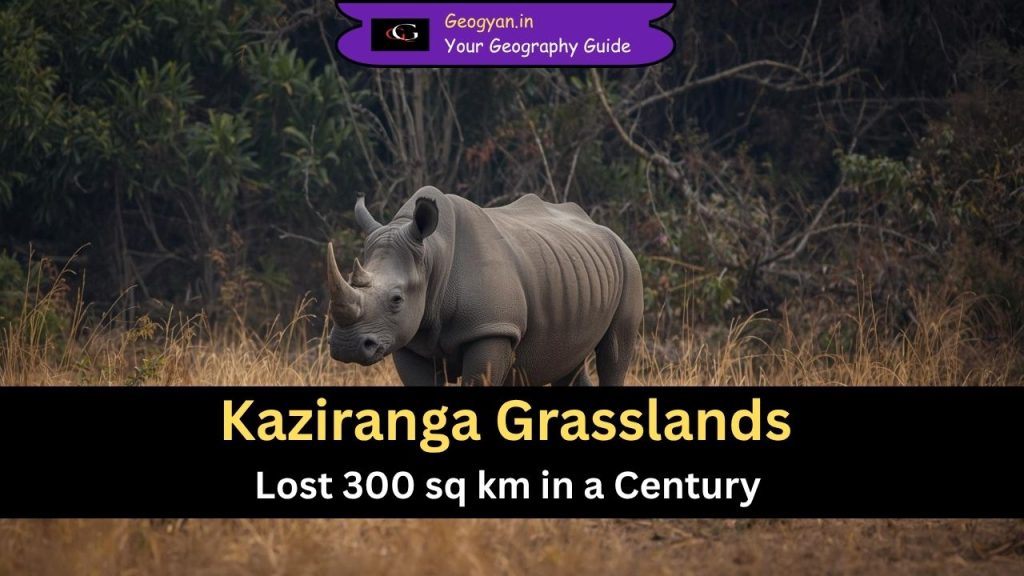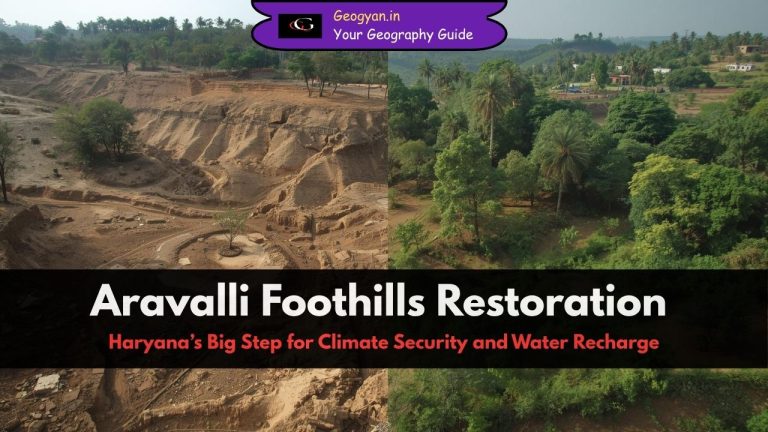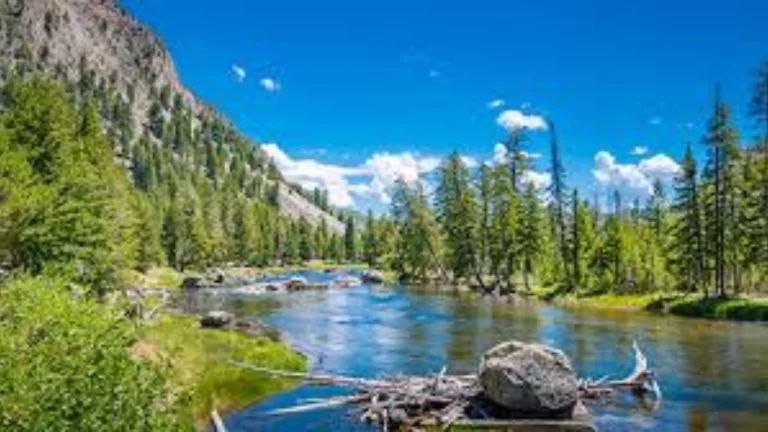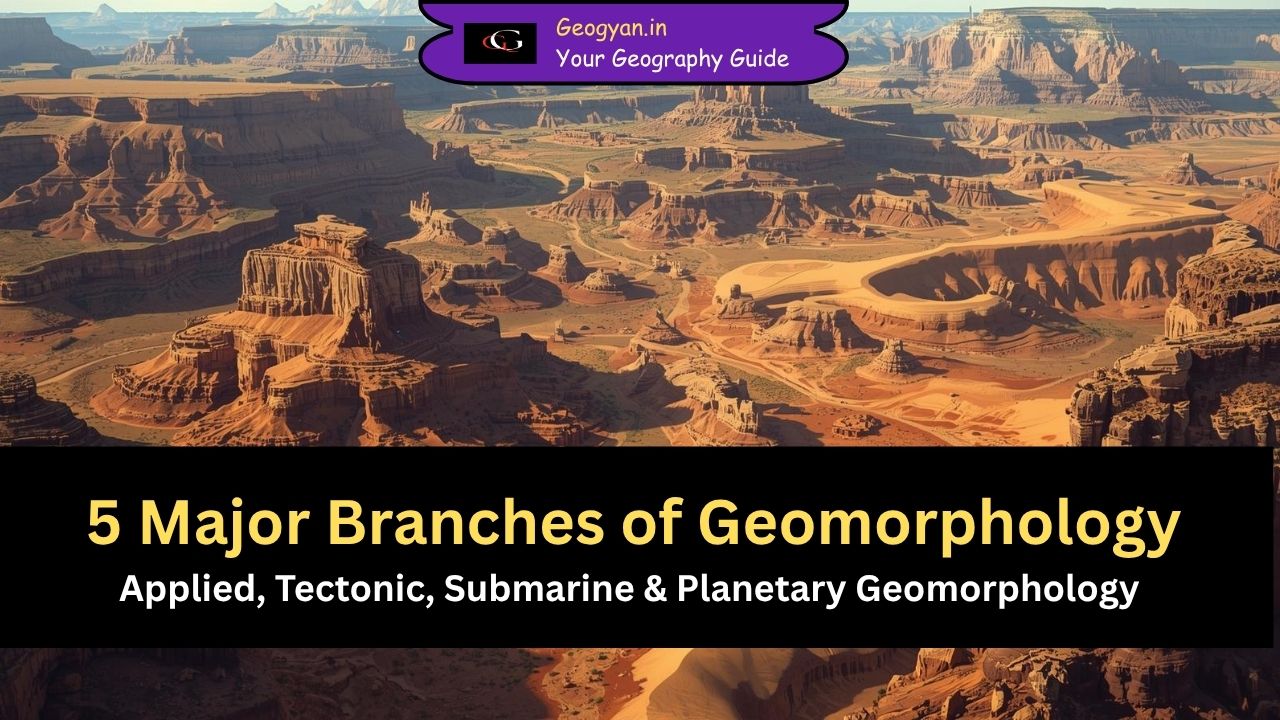Estimated reading time: 4 minutes

Table of contents
Recent News on Kaziranga Grasslands
A new study by the Wildlife Institute of India (WII) has revealed that Kaziranga’s iconic grasslands — vital habitats for rhinos, elephants, and swamp deer — have shrunk by 318.3 sq km between 1913 and 2023.
This loss is nearly equal to the entire area of Kolkata or half the size of Mumbai, highlighting the alarming ecological transformation in one of India’s most biodiverse floodplain ecosystems.
What Is the Kaziranga Grassland Ecosystem?
Kaziranga National Park, located in Assam, is a UNESCO World Heritage Site known for its rich biodiversity and floodplain ecology formed by the Brahmaputra River.
The park’s grasslands are essential for maintaining the habitat of megaherbivores such as the one-horned rhinoceros, Asian elephants, and swamp deer, which depend on these open landscapes for foraging and breeding.
How Much Grassland Has Kaziranga Lost?
According to WII, Kaziranga’s grasslands have reduced from 318.3 sq km to just about 229.2 sq km in the past 100 years.
While forest cover expanded from 0.65 sq km in 1913 to 229.2 sq km in 2023, the open grasslands steadily declined due to:
- Shifts in river morphology and hydrology
- Encroachment and land-use changes
- Invasive species such as Mikania micrantha and Chromolaena odorata
- Climate-induced flooding and temperature changes
How Is Climate Change Affecting Kaziranga’s Landscape?
WII’s analysis shows:
- Maximum temperatures dropped slightly (from 37.5°C to 36°C)
- Minimum temperatures rose (from 6°C to 8°C), resulting in warmer nights
- Rainfall and soil moisture increased, changing grassland dynamics
These changes have altered flood patterns of the Brahmaputra, pushing more water into forested regions and reducing open grassland zones vital for grazing animals.
Why Are These Grasslands Important for Wildlife?
Grasslands play a crucial ecological role:
- Provide habitat and food for rhinos, elephants, deer, and buffaloes
- Support the trophic web of the Kaziranga ecosystem
- Maintain balance between forest and floodplain vegetation
Loss of grasslands directly threatens the rhino population, as they may face food scarcity, restricted movement, and behavioral stress due to habitat compression.
What Are the Ecological Implications?
Scientists warn that the continued shrinking of grasslands could:
- Increase competition for resources among herbivores
- Encourage the spread of invasive species
- Disrupt the natural hydrological balance
- Lead to decline in biodiversity and ecosystem productivity
WII experts emphasize the need for strategic habitat restoration and hydrological management to sustain the Kaziranga floodplain ecosystem.
What Measures Are Recommended?
The Wildlife Institute of India suggests:
- Implementing integrated land-use planning
- Regular monitoring of vegetation patterns using satellite data
- Controlling invasive species growth
- Promoting balanced grassland–forest management
- Strengthening climate adaptation strategies in floodplain zones
Sources: TOI
FAQs
Q1. What caused the loss of grasslands in Kaziranga?
Main causes include climate change, river course shifts, invasive species, and land-use changes in the Brahmaputra floodplain.
Q2. How much area has been lost?
Approximately 318.3 sq km of grasslands have been lost between 1913 and 2023, nearly half the size of Mumbai.
Q3. Which species are affected the most?
The one-horned rhinoceros, swamp deer, and Asian elephants are the most impacted due to loss of grazing areas.
Q4. What is being done to restore grasslands?
The Wildlife Institute of India recommends invasive species control, land-use monitoring, and hydrological restoration measures.
Q5. Why is this issue geographically important?
Kaziranga lies in the Brahmaputra floodplain, making it a key geomorphological and ecological zone in India’s northeast — any landscape change here affects the entire river ecosystem.





























